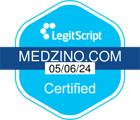Information

Written by Dr Kimberly Langdon, MD
Information last reviewed 06/21/19
About
Cholesterol is a fat made by your liver. There are two types of cholesterol: HDL and LDL. HDL (high-density lipoprotein) cholesterol is often referred to as ‘good cholesterol’ because it helps to reduce your levels of LDL (low-density lipoprotein) cholesterol, which is ‘bad cholesterol. If you have high cholesterol, you have a high level of LDL cholesterol, which is involved in blocking up your arteries. This causes your arteries to narrow and thicken, increasing your blood pressure and putting you at risk of stroke, heart attack and heart disease.
High cholesterol is often treated by statins and lifestyle changes such as quitting smoking. The goal is to reach an LDL value of less than 100mg/dL, which is especially important in patients who have other cardiac risk factors that could raise the risk of coronary artery disease (CAD). These risk factors are diabetes, cigarette smoking, hypertension, low HDL, and a family history of CAD.
Causes
High cholesterol is usually caused by a genetic defect that interferes with the ability of HDL to clear away the LDL, allowing it to build up inside the arteries. However, consuming a diet of high-fat foods and food containing high levels of cholesterol is an additional factor that often contributes -though rarely causes - high cholesterol. Foods that contain high levels of cholesterol include eggs, cheese, shellfish, liver, red meat etc.
Symptoms
Most people with high cholesterol do not have any signs or symptoms unless there is a genetic cause. This can cause cholesterol to build up the skin, creating yellowish patches, known as xanthomas. Other symptoms of high cholesterol include:
- Pain with walking from decreased blood flow to the legs from clogged arteries
- Transient ischemic attack (TIAs) temporary reduction in blood flow to the brain
- Chest pain
- Difficulty breathing
Diagnosis
High cholesterol is diagnosed by a simple blood test that measures the levels of both LDL and HDL cholesterol in your blood as well as the levels of other lipids (fats) called triglycerides. A high level of triglycerides combined with either a high LDL level or a low HDL level is linked to the build-up of cholesterol inside your arteries. You will be asked not to eat (9-12 hours before your blood test, for this reason, these blood tests are normally done in the morning).
The results of your blood test will be compared to a range of normal levels of cholesterol. The ATP III guidelines categorise cholesterol levels as follows: [1]
- < 100 mg/ dL - Optimal
- 100-129 mg/dL - Near optimal/above optimal
- 130-159 mg/dL - Borderline high
- 160-189 mg/dL - High
- >190 mg/dL - Very high
Treatment
Fibrates
Fibrates help to encourage the breakdown of VLDL (very-low-density lipoprotein), one of the types of LDL cholesterol. Fibrates also help to eliminate triglycerides from the blood. A high level of triglycerides and LDL is linked to a build-up of cholesterol inside the arteries. Gemfibrozil, Fenofibrate, Fenofibrate (micronized) and Fenofibric Acid are types of fibrate medication.
Combination drugs
Combinations of statins with high blood pressure medications or other lipid-lowering medications can also be used to treat high cholesterol. Combination drugs are used when one anti-cholesterol drug isn’t working well enough, or if you have both high blood pressure and high cholesterol. These combination drugs include:
- Atorvastatin and Amlodipine
- Lovastatin and Niacin (nicotinic acid)
- Simvastatin and Niacin
- Atorvastatin and Ezetimibe
- Simvastatin and Ezetimibe
Omega 3 acids
Omega 3 is found in many foods and over-the-counter dietary supplements, however ASCEPA ® (icosapent ethyl) is the first prescription Omega-3, that has been clinically proven to lower high triglyceride levels without raising the levels of bad cholesterol.
MTP inhibitor
MTP inhibitors, such as Lomitapide, impair the absorption of lipids and also blocks the conversion of triglycerides into a substance called apo-B, which is involved in the production of VLDL (very low-density lipoprotein) - a type of LDL cholesterol.
Apolipoprotein B antisense oligonucleotide
This type of medication blocks the production of a substance that reduces the liver’s production of some harmful lipids (fats), including LDL. Mipomerson, is an example of an Apolipoprotein B antisense oligonucleotide.
Cholesterol absorption inhibitors
Cholesterol absorption inhibitors help to prevent cholesterol being absorbed from food by the intestines. Ezetimbe is an example of a cholesterol absorption inhibitor.
Nicotinic agents
Nicotinic agents, such as Niacin (Vitamin B3) lower the levels of triglycerides and LDL cholesterol whilst raising the levels of HDL cholesterol. Of all the cholesterol-lowering drugs, nicotinic agents have the strongest effect on HDL levels.
Bile acid binders
Bile acid binders such as Cholestyramine, Colesevelam and Colestipol help to lower LDL by binding to the bile duct and helping to prevent the LDL from reaching the bloodstream where it can clog up the arteries.
Statins
Statins work by blocking an enzyme in the liver that is involved in making LDL cholesterol. Statins can reduce LDL levels by 25-60%. Most people find that low-intensity statins such as Simvastatin, Fluvastatin and Pravastatin are enough to help reduce their cholesterol. But some patients with very high cholesterol levels may need high-intensity statins such as Atorvastatin or Rosuvastatin.
Cholesterol-lowering medications
There are a variety of medications that can be used to lower cholesterol, with statins being the most popular. Other medications may be prescribed for people who do not wish to take statins, or for people who are unsuitable due to other pre-existing conditions.
Lifestyle changes
High cholesterol is often treated by cholesterol-lowering medications and lifestyle changes.
The following lifestyle changes can help reduce high cholesterol:
- Lowering the intake of red meat, fatty foods, eggs, dairy, and fried foods
- Increasing your intake of fiber with fruits and vegetables.
- Use olive oil and canola oil instead of butter.
- Exercise 30 minutes daily if possible. Or exercise until you feel out of breath at least twice a week.
- Eat only whole grains, not refined flour.
- Broil or bake meats.
- Eat more fish and poultry.
- Maintain a normal weight/BMI.
Comparison Table
Q&A
Yes, improving your diet to avoid high-fat and high-cholesterol foods and exercising regularly can lower your cholesterol by as much as 20%.
Yes, high cholesterol can cause clogged arteries. These can affect any organ in the body, but more commonly it is the heart, blood vessels, brain, and legs that are affected.
Disclaimer: This is not medical advice. You and your physician will determine if and how you should take any medication prescribed to you following a medical consultation.
- Executive summary of the third report of the National Cholesterol Education Program (NCEP) expert panel on detection, evaluation, and treatment of high blood cholesterol in adults (Adult Treatment Panel III). JAMA. 2001. 285:2486–97.
- Kannel, W.B., et al.,. Serum cholesterol, lipoproteins, and the risk of coronary heart disease. The Framingham study. Ann Intern Med,. 1971. 74(1):p. 1-12.
- Rakel. Interpreting Laboratory Tests >> Separating Diseased from Disease-Free Persons. Textbook of Family Medicine,. 8th ed. Saunders; Chapter 15.
- Stone NJ, Robinson JG, Lichtenstein AH, et al for the American College of Cardiology/American Heart Association Task Force on Practice Guidelines. 2013 ACC/AHA guideline on the treatment of blood cholesterol to reduce atherosclerotic cardiovascular risk in adults: a report of the American College of Cardiology/American Heart Association Task Force on Practice Guidelines. J Am Coll Cardiol. 2014 Jul 1. 63(25 Pt B):2889-934.













Quick and discreet
I ordered Azithromycin tablets for chlamydia treatment, received it next day in a brown discreet pack, and cheaper than all other pharmacies, can't ask for more
Jordan McCann